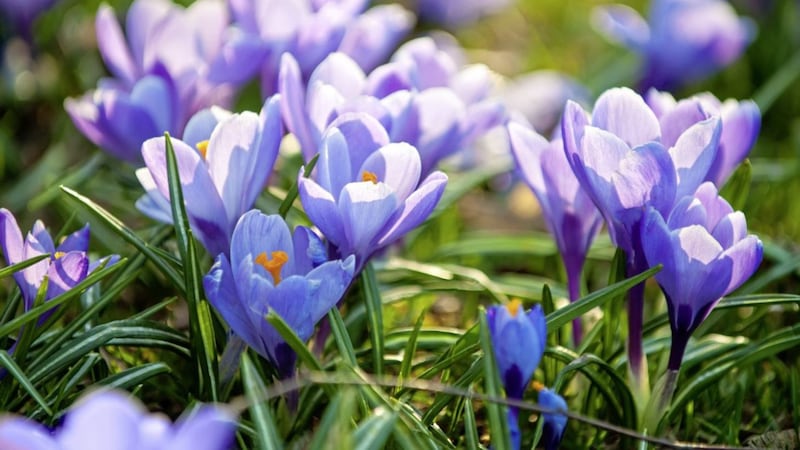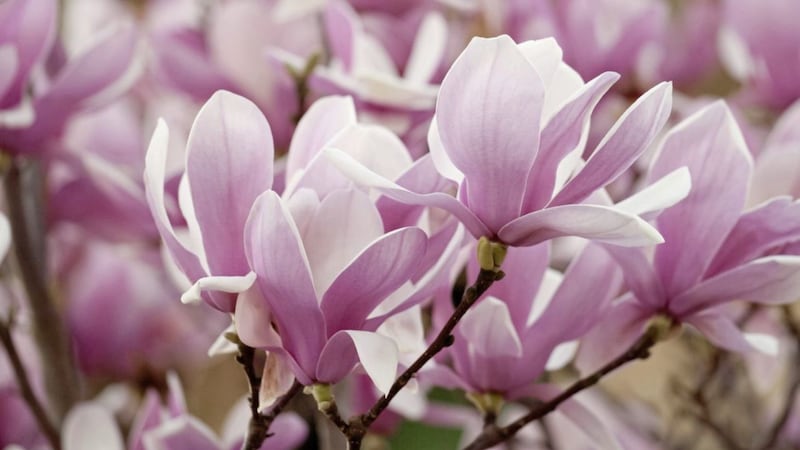FOR many gardeners the period between the beginning of the year and summer is measured in flowering bulbs. Even if we didn’t have a calendar to guide us, we could still tell roughly whereabouts in the seasons we are by watching the bulbs appear and disappear in succession. In my garden this process begins with crocuses; snowdrops come a close second, followed by daffodils, then tulips, before the alliums signal the onset of early summer.
The crocuses have been up for a couple of weeks already, the petals of the purple and white flowers showing as a saffron yellow bud.
They are not so much a carpet on my lawn as a modest mat, and more than a decade after planting, show few signs of wanting to naturalise to any noticeable extent. This is unfortunate as the key with every spring-flowering bulb is to maximise their number yet make it look natural, with drifts rather than straight lines or patterns. Even in containers it’s ill-advised to plant them in regular shapes as there’s always the possibility that one may not appear, wrecking your symmetry. Crocuses should be planted in early autumn so if you want a display this time next year, I suggest you make a note in your diary.
The name ‘crocus’ is ancient in origin, with variations and derivatives turning up in Latin, Hebrew, Sanskrit and Greek. It refers in one way or another to saffron, the spice derived from Crocus sativus, a native of south west Asia. The popularity of Crocus vernus and Crocus tommasinianus – that’s the winter and spring flowering species respectively that we’re focusing on here – grew in northern Europe during Elizabethan times and hasn’t waned since.
Crocuses work well in a woodland setting and are more than a mere substitute for snowdrops. In the parts of Europe, North Africa and the Middle East where they originate this is their natural habitat. Feel free to plant alongside snowdrops but ensure there are two distinct drifts, swathes or separate clumps. Study the location you have in mind to see which areas get direct sunlight in the morning or late afternoon to gain best effect, with the low winter sun either illuminating or back-lighting the flowers. Likewise when your planting on a lawn or in beds.
Planting is a job best carried out by two and is doubly easier again if the grass on the lawn is short. As long as your ground isn’t too hard you can use a bulb planter to punch a single hole into which you drop your bulb (which strictly speaking is a corm) before replacing the plug. If it’s a big area and you’re going for an intensive planting then it may be feasible to lift the turf in squares and position the bulbs below.
For those who already have other bulbs on their lawn that are due to come into bloom soon, it might be a good idea to take some photographs to ensure bulbs aren’t accidentally dug up when you plant more in the autumn. Also be mindful not to mow the foliage of your bulbs after flowering, as the leaves and spent flowers provides the initial nutrients for next year’s crop.
Crocus tommasinianus is a good spring flowering choice for grass as it likes full sun. The diminutive pink cultivar ‘Roseus’ looks deceptively fragile but is as robust enough to withstand all February can throw at it.
For slightly later in the year go for Crocus vernus (or Dutch crocus) and its cultivars, such as ‘Pickwick’, which has white flowers with deep purple veins.








